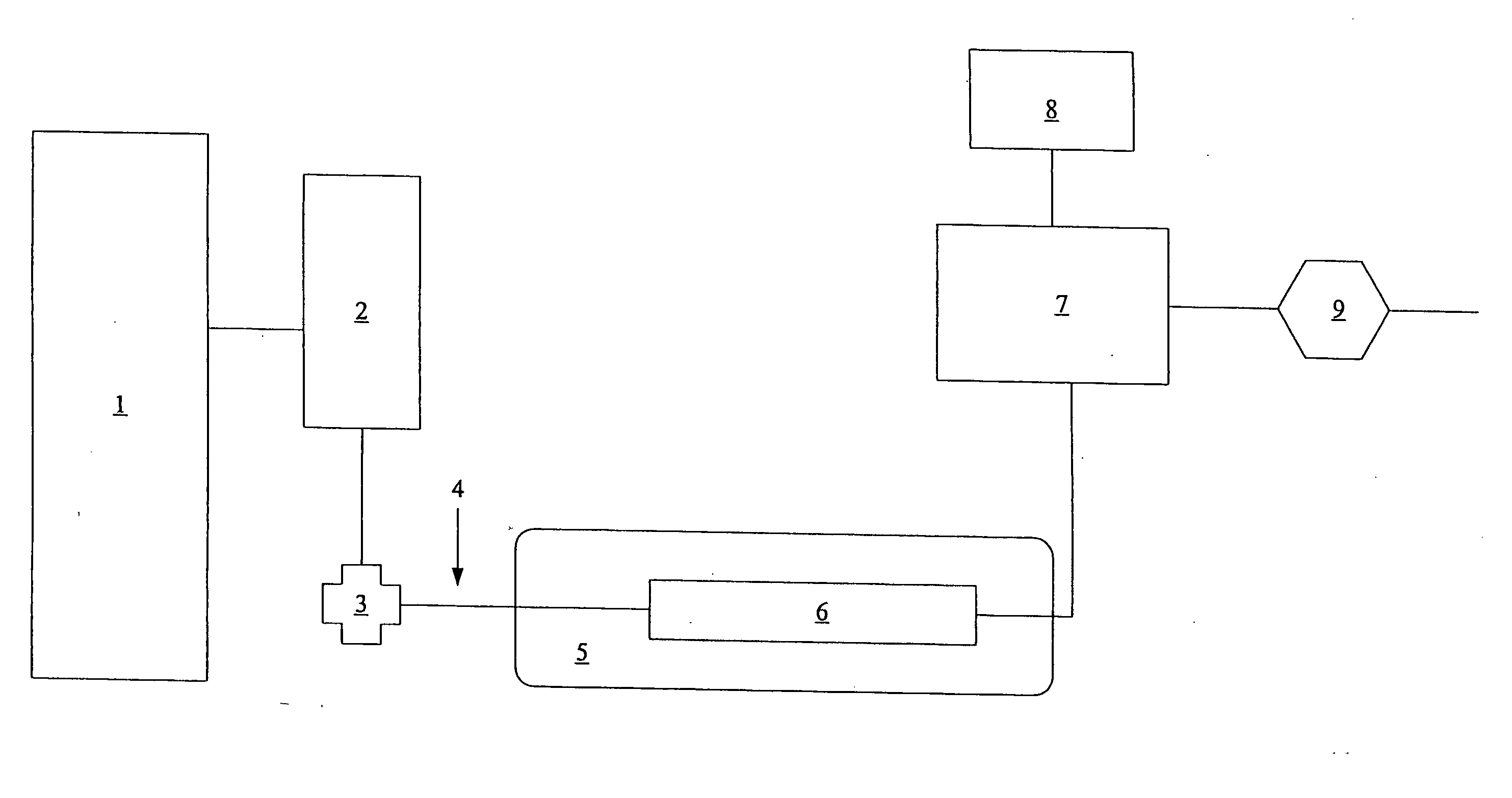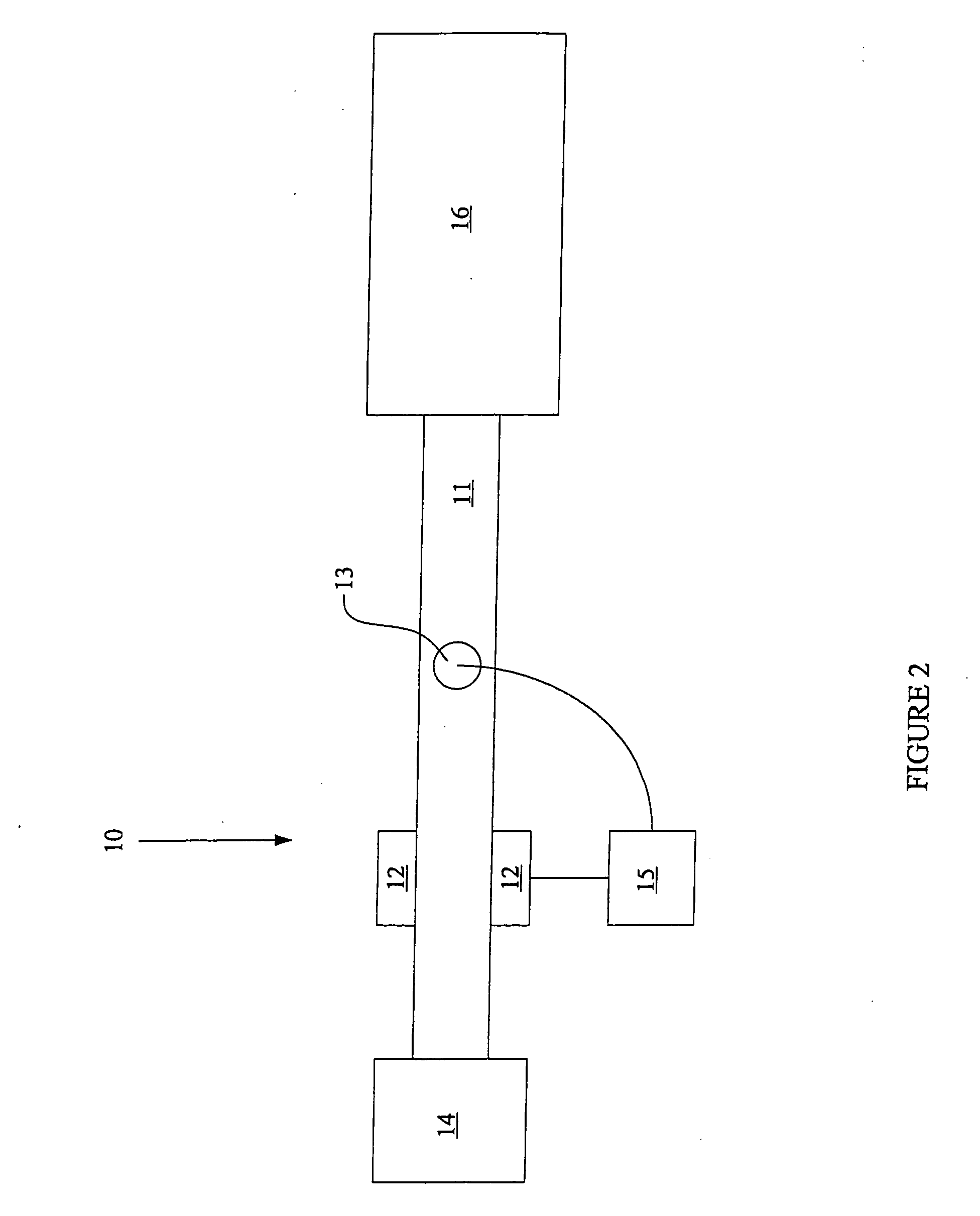Mobile phase treatment for chromatography
a technology of chromatography and mobile phase, which is applied in the direction of filtration separation, separation processes, instruments, etc., can solve the problems of compromising separation efficiency and peak shape, affecting the resolution of loss, etc., to achieve convenient temperature programming of the mobile phase, convenient and efficient method, and rapid equilibration
- Summary
- Abstract
- Description
- Claims
- Application Information
AI Technical Summary
Benefits of technology
Problems solved by technology
Method used
Image
Examples
example 1
[0043] 15 cm sections of 0.005″ and 0.007″ (inner diameter)× 1 / 16″ (outer diameter) stainless steel tubing were potted in aluminum cans. The potting mix was a Duralco High Temperature Epoxy Resin fortified with 35% by weight of aluminum powder. A recess was machined into a 1.25″ diameter aluminum rod to accept a heater cartridge, which was held in place with an insulated C-clamp. A 1.25″ diameter clamp heater of 200 watts was attached to the outside of the aluminum rod, and a temperature sensor was imbedded in a hole drilled in the bottom of the rod such that the block temperature could be monitored.
[0044] A short distance from the heater assembly, a small type J thermocouple was soldered to the outside of the stainless steel tubing extending out from the can. The flow of water through the tubing was controlled with a Knauer HPLC pump. An Alltech 300 psi backpressure regulator was coupled to the outlet of the tube to prevent boiling of the water inside the heated zone when the devi...
example 2
[0046] The heater portion of the apparatus in Example 1 was simplified by attaching a short heater cartridge with silver solder directly to a piece of 0.005″× 1 / 16″ stainless steel tubing and using it as a connector between an injector valve and separation column. A thermocouple was soldered directly to the outside wall of the stainless steel tubing 0.25 inches downstream from the heater cartridge. The power from the temperature controller to the heater was varied using pulse width modulation (from an incandescent light dimmer). Using this assembly, phenanthrene was eluted with 13840 theoretical plates and a peak width at half height of 0.89 seconds from a 10 cm ZirChrom PDB column (4.6 mm id, 3 micron particles, 300 Angstrom pore size, Zirchrom Separations) in 46 seconds using 35% acetonitrile in water at 3 mil / min and 150 degrees C. A 2.5 microliter injection loop was used along with a UV detector at 254 nm.
[0047] With all other parameters substantially the same except active pre...
example 3
[0048] The heater portion of the apparatus in Example 1 was modified by attaching one end of a piece of glass fiber insulated 30 gauge Nichrom 80 wire that was 15 inches long to the 0.005 inch internal diameter stainless steel tube. The wire was wrapped tightly against the stainless steel tubing and secured in place with high temperature epoxy. An insulated connection was made to TFE coated copper wire, and in the same vicinity, another TFE insulated copper wire was attached to the stainless steel tubing as a ground line to complete the circuit. The stainless steel tubing was insulated with a small piece of 70 micron thick polyimide tape, and a thermocouple was placed against it and secured with Teflon heat shrink tubing. A water mobile phase was pumped through the tubing and energy was transferred into it from the resistance wire by applying a DC voltage from 0.06 to 24 volts. The water was heated in accordance with the amount of power supplied. The temperature feedback and voltage...
PUM
| Property | Measurement | Unit |
|---|---|---|
| length | aaaaa | aaaaa |
| length | aaaaa | aaaaa |
| mass | aaaaa | aaaaa |
Abstract
Description
Claims
Application Information
 Login to View More
Login to View More - R&D
- Intellectual Property
- Life Sciences
- Materials
- Tech Scout
- Unparalleled Data Quality
- Higher Quality Content
- 60% Fewer Hallucinations
Browse by: Latest US Patents, China's latest patents, Technical Efficacy Thesaurus, Application Domain, Technology Topic, Popular Technical Reports.
© 2025 PatSnap. All rights reserved.Legal|Privacy policy|Modern Slavery Act Transparency Statement|Sitemap|About US| Contact US: help@patsnap.com



